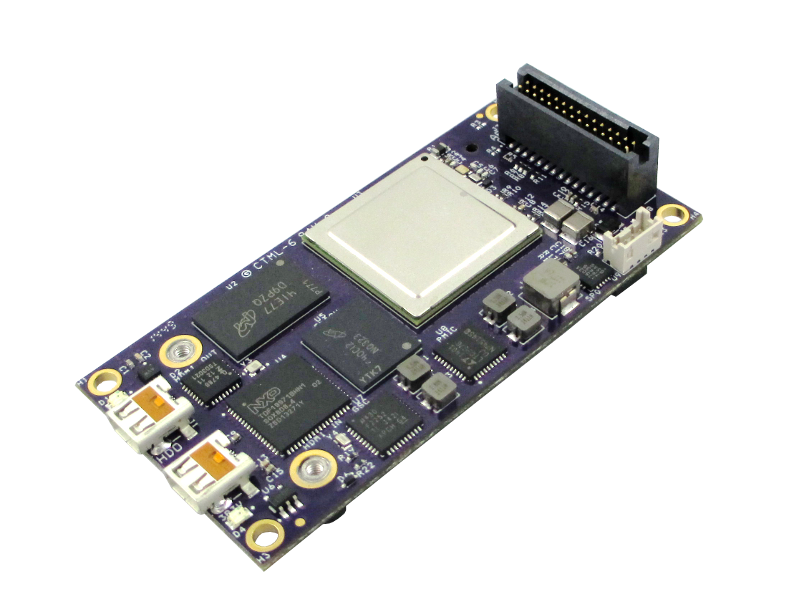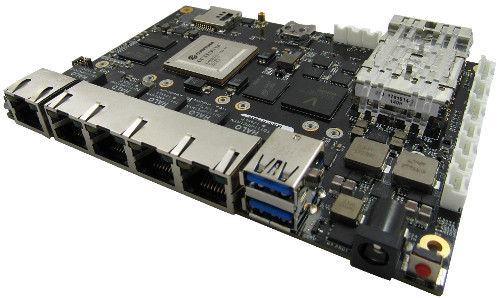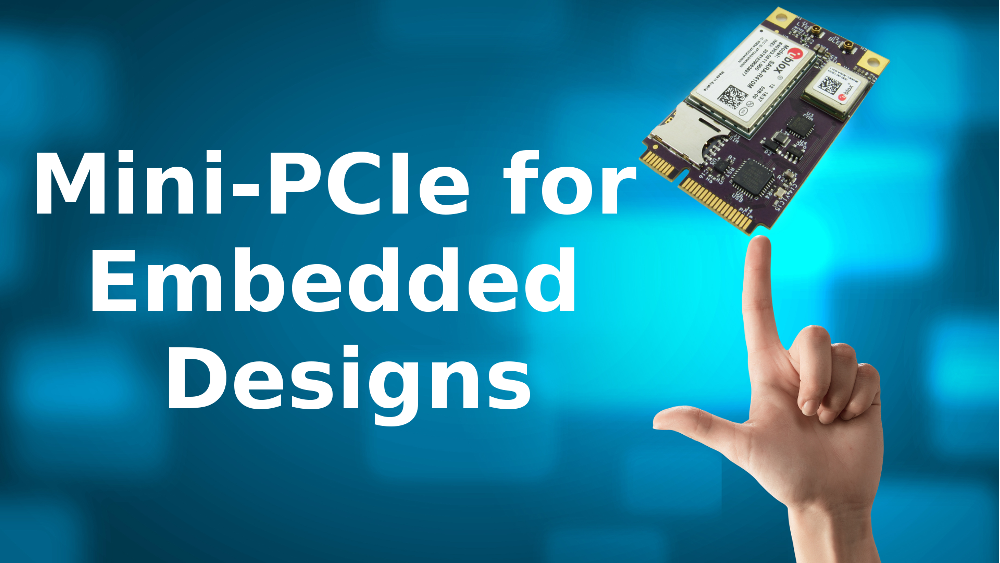
What is Mini-PCIe and why would I want to use it for embedded communications design?
Embedded system designers face significant challenges when it comes to creating or modifying a design. Not only do they have to deal with the familiar triple constraints of cost, time, and quality, but embedded designs typically need to also be small, managed remotely (or not at all), operate for at least a decade, and perform flawlessly under extreme conditions. And for embedded communication systems, the evolving technology landscape constantly threatens new designs to become “legacy” before the ink on the datasheet is dry. That is quite an undertaking when you consider that meeting the cost and time constraints will usually rule out a custom design. Thankfully, there is now an abundance of Mini-PCIe peripherals and host platforms to meet the demanding requirements of embedded communications systems. In this article, we will take a closer look at what Mini-PCIe has to offer and point to some available products on the market.
A Standardized and Ubiquitous Interface
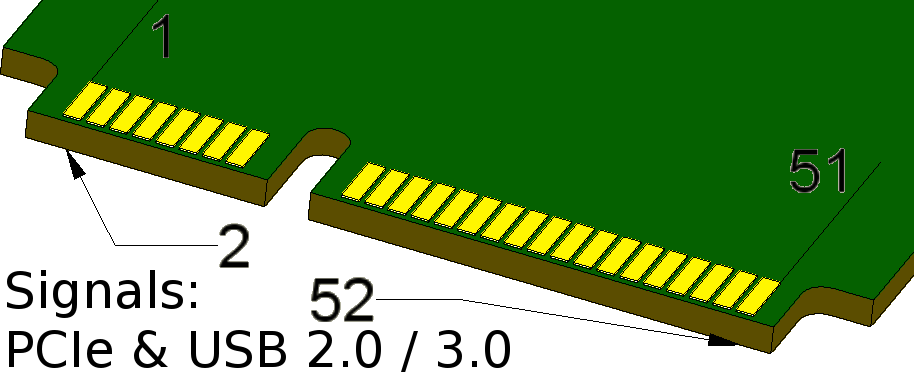
Mini-PCIe is part of the PCI Express specification developed by the PCI Special Interest Group (PCI-SIG) in the early 2000’s to replace PCI as the interface standard for personal computer peripherals. If you aren’t familiar with the PCI-SIG, it is an electronics industry consortium of more than 900 members that include heavyweights like Intel, HP, Dell, and IBM. The group works together to define specifications that will help advance their industry and benefit consumers by enabling product interoperability. PCI Express is a high-speed serial expansion bus well suited for communications, video, and storage peripherals. Mini-PCIe is the small-form-factor complement to PCI Express, also known in the industry as Mini PCI Express, Mini PCI-E, mPCIe, and PEM. The PCI-SIG is currently working on version 6.0 of the specification. What this means for the embedded designer is that Mini-PCIe is a mature and stable interface with continued industry support to keep it relevant. There are literally thousands of peripherals in the Mini-PCIe format available from hundreds of suppliers for a wide range of communication system applications.
Size, Signals and Power
Size often becomes a low-priority trade off in embedded systems so the diminutive form factor of Mini-PCIe cards should be welcomed by designers: 30mm × 50.95mm (width × length) for full size cards and just 30mm x 26.8mm for half size. Using modules with such a small footprint means that carrier boards and overall systems can be much smaller than those using PCI Express peripherals. But despite their small size, Mini PCI Express slots expose the same PCI and USB 2.0 signals as PCI Express (just not as many) via a 52-pin edge connector. There are also signals defined to support communications such as a wifi status LED and SIM cards. The specification allows devices to draw up to 3A at 3.3V but also provides a 1.5V line with total power consumption depending on the card type.
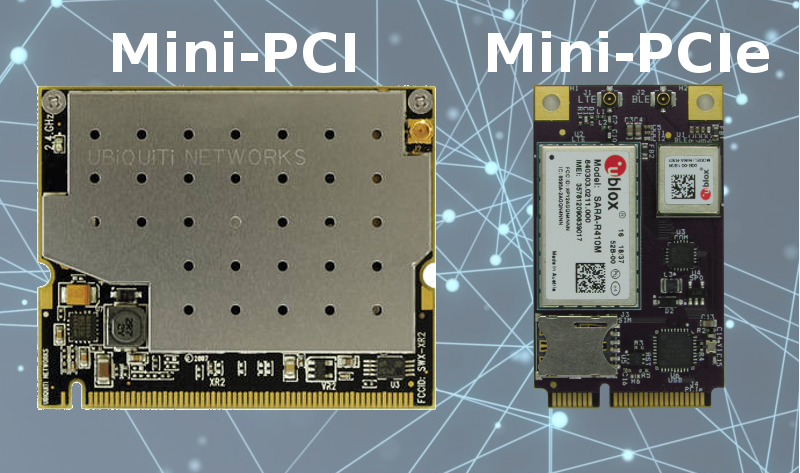
One Design, Multiple SKUs
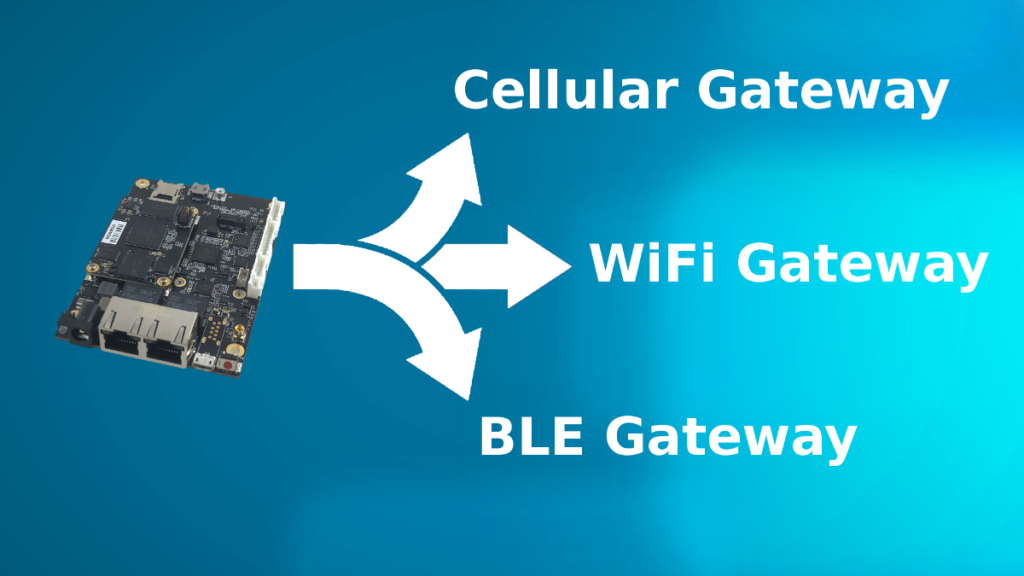
Another advantage of adopting a standard interface like Mini-PCIe is that it allows embedded system designers to create an open design platform that can accept different peripheral cards depending on the needs of the end customer: from one design there can be multiple SKUs depending on which peripheral card is loaded in the Mini-PCIe slot. A platform can support wifi applications as one SKU, cellular as another, and GSM as a third. The use of plug-in peripheral cards can also enable a platform design to last longer since the most frequently changing part of communications technology is located on the peripheral card. Fewer design iterations and a simple upgrade path can mean the difference between a new program getting approved or deferred.
But is it Tough Enough?
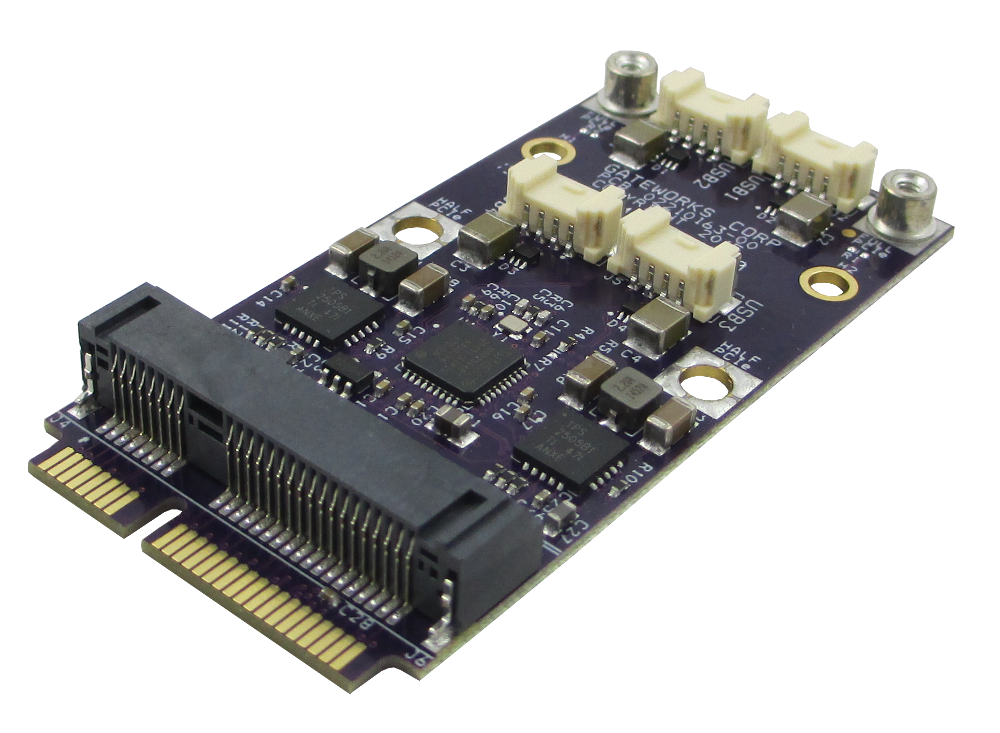
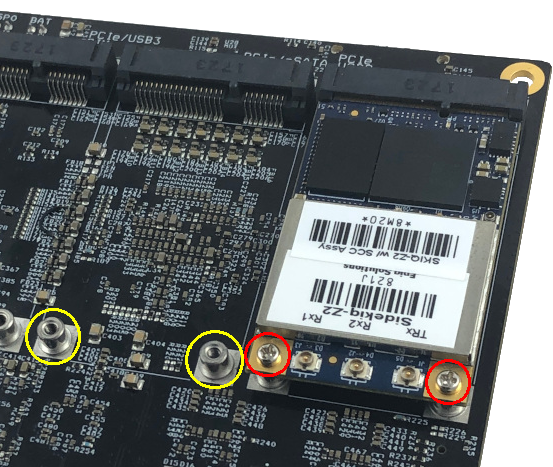
Mini-PCIe board mounts shown in yellow circles.
Mini-PCIe cards are inherently improved for rugged applications over the older Mini-PCI cards. This improvement has to do with the mounting of the card to the base platform. The old Mini-PCI card was held in with a metal retaining clip. The new Mini-PCIe design is held down with 2 screws. For even extra protection, something like Loc-Tite can be used to secure the screws into the base mount. For the considerations mentioned above (standard interface, small size, low power), manufacturers have seen Mini-PCIe as an opportunity to get their peripherals into the embedded market. They also recognize that embedded systems go into some of the harshest environments so their peripherals have to be up to the task. Many suppliers will design their products with ruggedness in mind and use advanced manufacturing techniques, such as using components that are themselves temperature and vibration rated, use automated machines for SMT component placement, and spray key components or the entire PCB with resin or other coating for added protection. Regardless of where the final system is deployed, there are bound to be Mini-PCIe cards that can withstand it.
Examples of Mini-PCIe & M.2 Cards for Communication & Peripheral Expansion
Now let’s look at some examples of current peripheral cards that exist in Mini-PCIe format and suitable for embedded communication systems. There are also many other peripherals available in the Mini-PCIe format that support storage, video and other communication protocols.
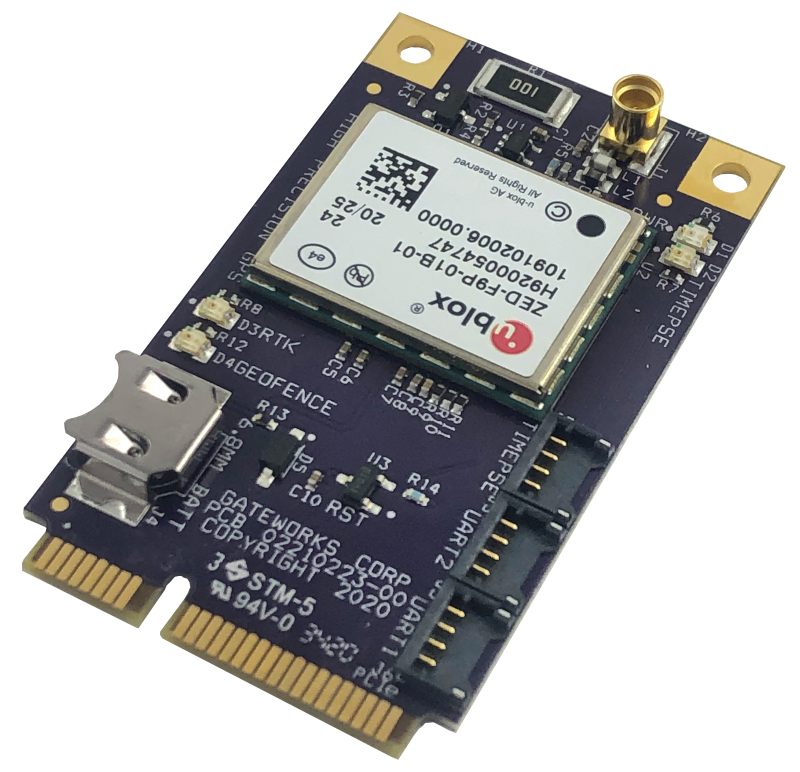
- WiFi Radios: They exist for most 802.11 technologies (A/B/G/N/AC/AX) with various MIMO antenna configurations (1×1, 2×2, 3×3, 4×4) and different power output options depending on the range needed. One popular example is the Compex WLE900VX radio (available as the Gateworks GW10732). Review the Gateworks WiFi Wiki Page for more information.
- Cellular Modems: When a WiFi connection is not available, often a cellular connection will be. Cellular modems are often used in embedded system and come in the Mini-PCIe or M.2 form factor. The M.2 format is easily accommodated with the Gateworks Mini-PCIe to M.2 Adapter. Cellular modems are available for every bandwidth requirement. For small amounts of sensor data in IoT applications, a CAT-M1 modem like the GW16132 provides lower power and cost. For streaming video, LTE and 5G modems such as the Telit FN990 are available offering over 1Gbps bandwidth. For modems or Mini-PCIe slots that don’t already have a SIM card mapping, Gateworks offers the GW16103 Mini-PCIe SIM Card Adapter. Review the Gateworks Cellular Modem Wiki Page for more information.
- Satellite Modem: For applications outside of cellular range, an Iridium Satellite Modem like the GW16130 can be used in a Mini-PCIe slot. This Mini-PCIe satellite modem allows for small amounts of data to be transferred nearly anywhere in the world.
- Software Defined Radios: Special applications require specific RF frequency bands that aren’t common or widely available on the public market. These applications can use a Software Defined Radio (SDR) in a Mini-PCIe slot. These SDRs RF can be tuned and programmed via software on the fly, often used for monitoring RF signals. Review the Gateworks SDR Showcase for more information.
- GPS / GNSS Receivers: Many SBCs feature an onboard GPS, but some GPS / GNSS functionality can be added in a Mini-PCIe slot. Often these are high performance specialty chipsets that can provide centimeter-level accuracy. One such GNSS / GPS Mini-PCIe card is the Gateworks GW16143.
- Artificial Intelligence (AI) / Machine Learning (ML) / Tensor Processsing Unit: To further expand a systems ability to for AI, a TPU can be added through the Mini-PCIe interface. Google has created the Coral TPU Mini-PCIe card.
- DIO / ADC / DAC / UART / USB / Serial Expansion: There are scenarios when the SBC does not have enough of a specific interface. This is where a Mini-PCIe expansion card can be used. Gateworks manufactures a variety of different Mini-PCIe expansion cards, such as the GW16113 Digital IO card and the GW16112 USB card. View all of the Gateworks Mini-PCIe expansion cards.
- M.2 Adapter: When an expansion card is available in only the M.2 format and not a Mini-PCIe format, a M.2 adapter can be used. View the GW1614x M.2 Adapters.
- Video / Audio Expansion: To add more video functionality, video Mini-PCIe cards can be used. A specific example is the AVC8000nano Mini-PCIe card which allows for up to 8 D1 video input streams. Read more on the Gateworks AVC8000nano Wiki Page. Other manufactures create a variety of video and audio Mini-PCIe expansion cards.
- Ethernet Expansion: When more Ethernet ports are needed, an Ethernet Mini-PCIe card can be added to the system. View the Gateworks Ethernet Mini-PCIe Expansion Wiki Page.
- Power Expansion: Some peripherals off board require extra 3.3V or 5V power connections. These power connections are readily available on the Gateworks GW16120 Power Expansion Mini-PCIe Card.
- Storage Expansion: When the host or baseboard does not have enough flash storage, more can be added with different Mini-PCIe cards. The GW16103 offers a MicroSD slot. mSATA Mini-PCIe cards are also available explained on the Gateworks SATA Wiki Page. NVMe drives can be used with the GW16148 M.2 adapter. There are also a few other storage variations that work over the PCIe bus.
- CAN Bus Expansion: Solutions requiring CAN Bus can utilize a Mini-PCIe card with CAN Bus output. Many Gateworks SBCs have CAN Bus, but for the ones which don’t, a Mini-PCIe card can provide that capability. Read more on the Gateworks CAN Bus Wiki page.
- And More: The above list covers many different Mini-PCIe cards, but there are surely some that were left out. If it is an interface or feature meant for computers, there is a good chance a Mini-PCIe card has been created for it and can be found by searching google.
Single Board Computer (SBC) as Embedded Communications Platform
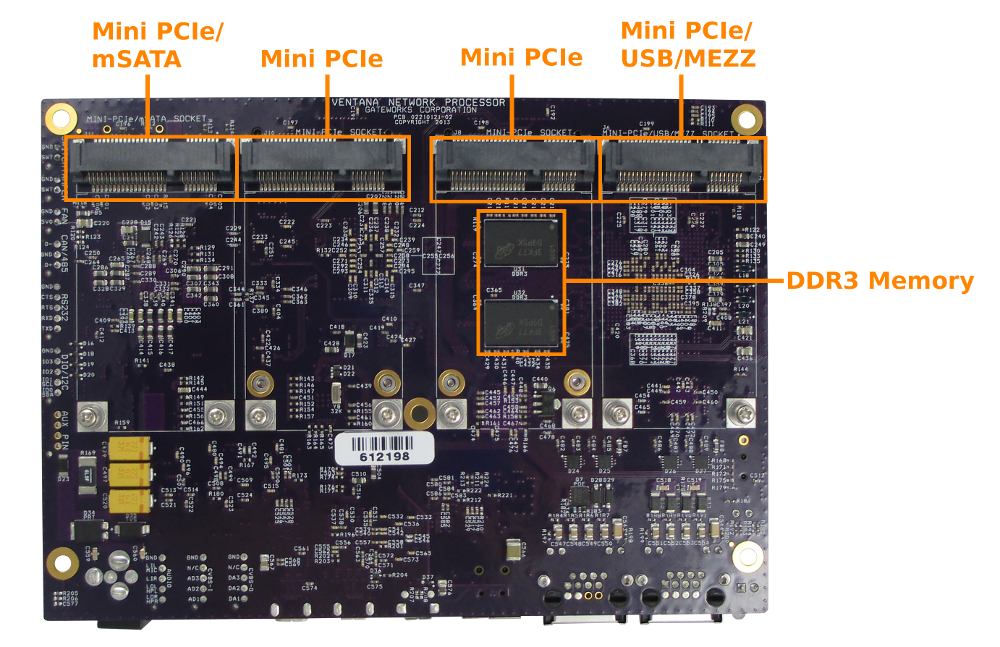
Mini-PCIe devices cannot typically function or exist on their own, rather they require a host platform, such as an embedded single board computer with a CPU, DRAM and flash storage. Gateworks designs and manufactures rugged and industrial single board computers that feature Mini-PCIe slots. Gateworks adheres to the formal Mini-PCIe specification with regards to pin signals and voltage levels. What is unique on the Gateworks SBCs is that many models feature multiple Mini-PCIe slots, with some models supporting up to 6 Mini-PCIe slots. Why would one need so many Mini-PCIe slots you may ask? Multiple slots allow for a variety of wireless protocols, expansion of peripherals, and redundancy where needed. For example, a system that requires both 2.4GHz and 5.8GHz WiFi coverage can utilize two separate radios in two Mini-PCIe slots. A system where a local WiFi connection is used but a cellular internet connection provides internet requires two Mini-PCIe slots, one for the WiFi radio and another for the cellular modem. Many Internet of Things (IoT) Gateways require different communication protocols, such as BLE, 802.11ah, WiFi, and cellular. Each of these can be run simultaneously with the availability of multiple slots. RF communication is not the only use Mini-PCIe. As provided in the example list in this article, there are hundreds of different interface expansion options that can be added through the Mini-PCIe slot. When even more Mini-PCIe slots are needed than available, the Gateworks GW16081 Mini-PCIe Mezzanine provides up to 7 more Mini-PCI slots. This provides for a truly flexible and expandable platform.
Is M.2 The Future of Mini-PCIe?
It is also worth noting that the M.2 interface, which replaced mSATA and became popular for non-volatile memory, has been increasingly used for niche devices such as 5G Cellular modems such as those from Telit. M.2 cards are smaller than Mini-PCIe so they don’t contain as much circuitry but for very specific uses, they might fill a gap where a Mini-PCIe peripheral doesn’t yet exist. A Mini-PCIE to M.2 adapter such as the Gateworks GW16140 or GW16141 will easily bring a B-Key M.2 peripheral into a host system that supports USB or Mini-PCIe. The GW16148 can be used for M-Key NVMe and the GW16151 can be used for E or AE Key WiFi radios. More information about M.2 cellular modems can be found on the Gateworks Cellular Modem wiki page.
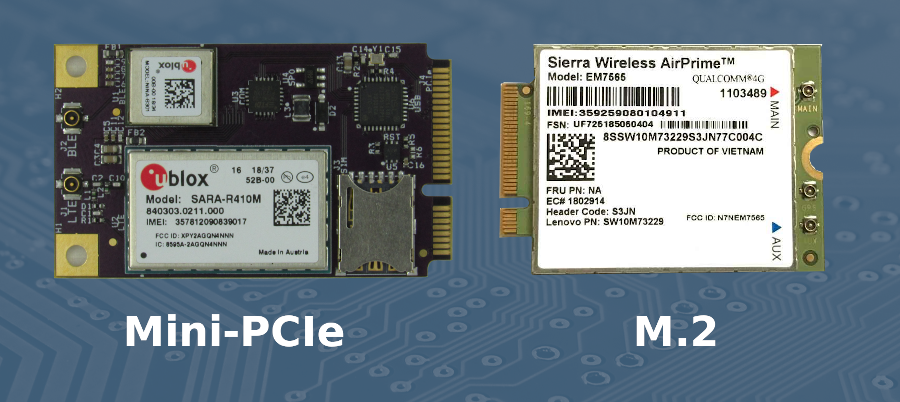
Summary – Mini-PCIe Provides Exceptional Expansion
In summary, Mini-PCIe peripherals are available that can address the needs of embedded systems: small, low-power, rugged, and supported by an industry-standard form factor and interface. With so many peripherals available on Mini-PCIe cards and a wide selection of host platform SBCs, designers of communications systems can focus on adding value quickly and easily. Mini-PCIe slots offer extreme flexibility to add whichever wireless format is needed, from Sub-1GHz to 5G Cellular to standard 802.11 WiFi. The ability to have multiple slots allows for more than one wireless interface, whether redundancy is needed or just variety. Being able to upgrade wireless technologies without having to redesign the system saves both time and cost. Using a base platform like a Gateworks SBC allows for different wireless protocols or peripheral interfaces to be chosen depending on the project’s needs. Mini-PCIe has proven it’s worth over the years and will continue to provide an excellent interface for wireless embedded systems.
Gateworks Corporation has been designing and manufacturing high-quality ARM-based single board computers for embedded and industrial applications since 1998. Our rugged SBC’s are the computing platform of choice for companies who value reliability, long-life availability, and superior technical support. All SBCs are made in the USA and feature industrial temperature parts. Several industrial SBC families have varying sizes from 35x70mm up to 140x100mm with Mini-PCIe slots for expansion. The SBCs feature multiple ethernet (including dual Gigabit) ports as well as multiple Mini-PCIe slots for WiFi and Cellular radios. Each single board computer is designed with an optimized and highly efficient power supply that accepts 10-60VDC. To further view the entire line of Gateworks SBCs, please visit the Gateworks Industrial Single Board Computer product page.
